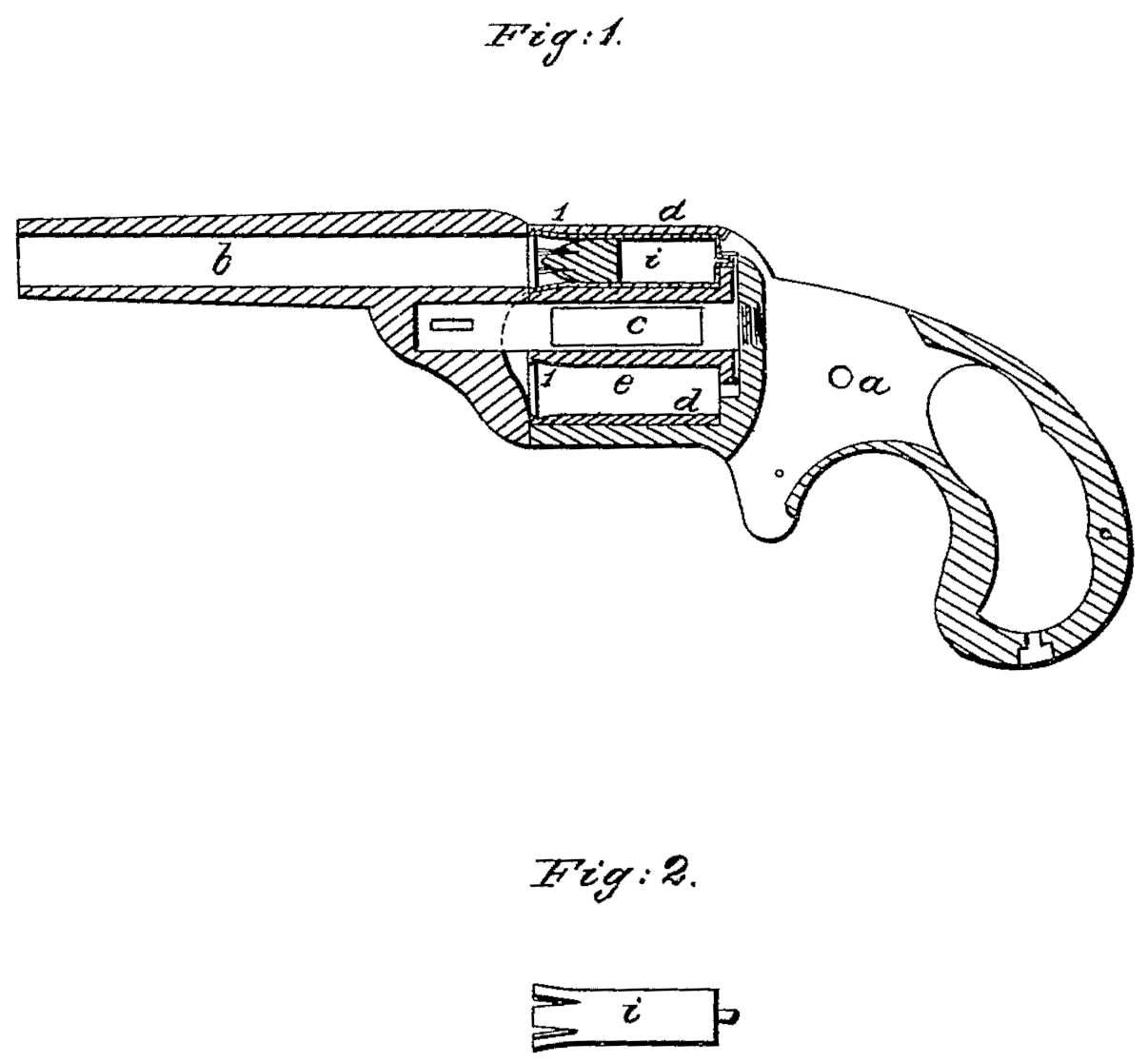US 43709
UNITED STATES PATENT OFFICE.
CHARLES ROBITAILL AND FLORIAN DAHIS, OF BROOKLYN, NEW YORK.
IMPROVEMENT IN REVOLVING FIRE-ARMS.
Specification forming part of Letters Patent No. 43,709, dated August 2, 1864.
To all whom it may concern:
Be it known that we, Charles Robitaill and Florian Dahis, of Brooklyn, in the county of Kings and State of New York, have invented, made, and applied to use a certain new and useful Improvement in Revolving Fire-Arms; and we do hereby declare the following to be a full, clear, and exact description of the said invention, reference being had to the annexed drawings, making part of this specification, wherein—
Figure 1 is a section representing our improvement in place for use, and Fig. 2 is a side view of the cartridge-case separately.
Similar marks of reference denote the same parts.
Cartridges have heretofore been entered into the chambers of the revolver from the front end, and have had various devices for exploding the cartridge. Our invention does not relate to any of these features.
The nature of our said invention consists in recesses inside the forward ends of the chambers in the cylinder of a revolving fire-arm, taking spring lips at the end of the metallic cartridge-case for the purpose of holding such cartridges into the chambers and preventing their slipping out accidentally when being carried, and also to prevent the cartridge on line with the barrel slipping forward, so as to partly enter the rear end of the barrel, and thereby prevent the rotation of the cylinder, and in such cases the cartridge sliding for ward generally prevents an explosion, because the fulminate is beyond the reach of the hammer.
In the drawings, a represents the handle; b, the barrel, and c the center-pin of the cylinder d, all of which parts, together with the lock-trigger and detonating parts of the cartridge, may be of any usual or desired character, as they form no part of our invention.
The chambers e in the cylinder d are formed with a slight enlargement just within the forward end of each chamber, as at 11, and the metallic cartridge-case i is cut into strips or formed with serrations at its forward end, beyond the ball, which ball is shown in Fig. 1 by red lines, and these serrations or strips form springs, and, being larger in diameter than the rest of the cartridge-case, spring out into the recesses or shallow groove when the cartridge is forced into the chamber. This holds the cartridge in sufficiently to prevent its slipping out or partially out of the chamber, and after the arm has been discharged the case can be forced out by a rod or wire introduced at the rear end. The forward part of the groove not being square, but inclined, the springing ends of the cartridge-case are thereby pressed together, so as to allow the case to be slid out.
It will be evident that this cartridge-case does not require any device— such as a gate— to hold it in, and the bracket under the barrel, receiving the center-pin, can be removed at the part adjacent to the end of the cylinder to prevent the dirt from the escape-gases interfering with the rotation of said cylinder.
What we claim, and desire to secure by Letters Patent, is—
A groove inside the front end of the chamber of a revolving cylinder, receiving the springing edges of the cartridge-case, for the purposes and as specified.
In witness whereof we have hereunto set our signatures this 15th day of April, 1864.
CHARLES ROBITAILL.
FLORIAN DAHIS.
Witnesses:
Thos. Geo. Harold,
Chas. H. Smith.

